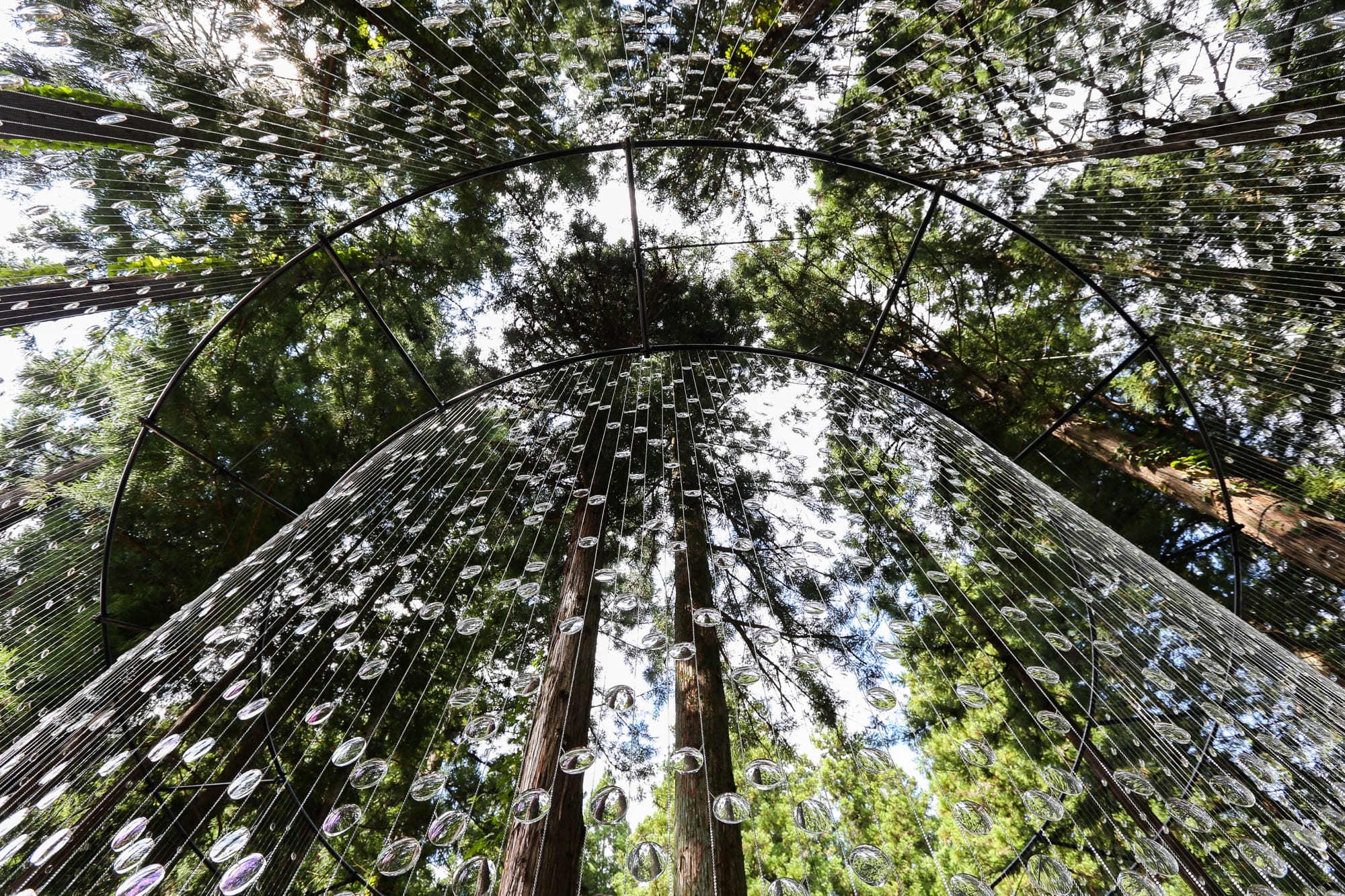This post was originally published on Colossal
Suspended like a vortex of rain, a new installation from Caitlind r.c. Brown and Wayne Garrett ushers viewers into a shimmering enclosure.
“A Whisper in the Eye of the Storm” dangles 14,000 prescription lenses from a pair of concentric circles. Created for the Northern Alps Art Festival in Omachi City, the site-specific work evokes the region’s historic relationship to water.
Blanketed with heavy snow in the winter and drenched during rainy summers, the city experiences several wet seasons. Situated at the base of the Japanese mountain range, it boasts natural features like lakes, hot springs, and hydroelectric dams. Omachi has also seen its population rapidly dwindle in recent years.
Brown and Garrett have previously worked with found, recycled objects like lightbulbs and telephones. Nested behind Nishina Shrine along the shore of Lake Kizaki, this new piece repurposes eyeglasses that catch and refract sunlight and magnify the surrounding cedar forest, focusing viewers’ gazes on the enlarged natural world around them.
“The work invites visitors to look at the landscape (and each other) with fresh eyes, seeing differently and peering deeply into the ancient and evolving landscape,” the artists say.
“A Whisper in the Eye of the Storm” is on view through November 4. Find more from Brown and Garrett on their website.






Do stories and artists like this matter to you? Become a Colossal Member today and support independent arts publishing for as little as $7 per month. The article 14,000 Prescription Lenses Dangle like Dewdrops in a Lush Japanese Forest appeared first on Colossal.





0 Comments